All parents are concerned about the first complementary foods for a child. If the baby is on breastfeeding and is gaining weight well, then acquaintance with adult food should be postponed until six months. Artificers or babies who are not gaining weight well are recommended to enter the first one. Where exactly to start depends on the wishes of the parents and the recommendations of the pediatrician.
Introduction to adult food
If the doctor said: “We introduce complementary foods at 3 months!”, It means that there are good reasons for this. Do not resist and argue with a specialist.
Doctors usually give such recommendations to those children who are small in weight or height, despite regular feeding with milk or formula. There is a certain norm according to which you need to start from 3 months. Your pediatrician has a food quantity chart. Ask your doctor to give it to you and read it carefully.
at 3 months
So you've decided to introduce your baby to adult foods. Where to begin? There are several options: cereals, vegetable and fruit purees or juice. Depending on why your baby is recommended to start early complementary foods, the method of introducing the baby to food is chosen.
Number of days / product | ||||||
Quarter teaspoon | Half teaspoon | 2/3 teaspoon | 1 teaspoon | |||
Half teaspoon | One teaspoon | Three teaspoons | ||||
On the tip of a teaspoon | Quarter teaspoon | Half teaspoon | 2/3 teaspoon |
Juice introduction
Complementary foods with juice from 3 months are recommended for children who develop normally, gain weight well and grow. Nowadays, on the shelves of stores you can find a lot of products made specifically for baby food. You can purchase juice that does not cause allergies and is recommended for consumption from the age of three months.
Also, an alternative option may be to prepare a delicious liquid yourself. If you have a juicer, then feeding a baby at 3 months with homemade juice will not be difficult.

How to introduce a new drink?
It is better to start with an apple or a pear. Shop products are already ready for use. If you squeeze the juice yourself, then it must be diluted with drinking water in an amount of one to one.
If you have never given juice to a baby, then you need to gradually start complementary foods from 3 months. says that on the first day you can give the child a few drops of juice. After that, you need to carefully observe the reaction of the baby.
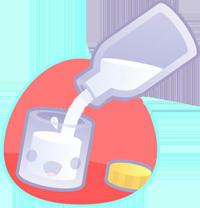
Introduction of fruit or vegetable puree
If the baby has too much weight gain (3 months), complementary foods can be started with vegetables or fruits. A prerequisite for this is the absence of allergies during breastfeeding.
If you decide to introduce vegetables, then you should start with zucchini, cauliflower or broccoli. Never enter two vegetables at the same time. For the first feeding with fruit, apples or pears should be preferred. Exotic fruits (pineapples, kiwi and others) should be completely postponed until the moment when the child is one year old.
You can purchase jars of fruit and vegetable food from the store or cook your own food. Shop products are already ready for use. Carefully look at the expiration date and read the composition of the dish.
At home cooking you need to boil the vegetables. After that, you need to grind the product in a blender or with a meat grinder. In order to make the dish more liquid, you need to add a little drinking water to it. It is not recommended to salt the first meal or add sugar. fruit puree can also be prepared with a blender or a special food processor.
How and in what quantity to give puree?
On the first day, offer your baby puree on the tip of a teaspoon. See how your body reacts to the new food. On the second day, you can slightly increase the amount of complementary foods for children from 3 months. The table indicates that after two weeks the baby can consume up to 50 grams of puree. A prerequisite is the absence of an allergic reaction.

The introduction of porridge
In this case, it is worth giving preference to buckwheat or rice groats cooked in water. You can buy such porridge in the store. Enough to dilute it hot water. You can also boil the cereal yourself and carefully grind it to a puree state. can be prepared for those babies who eat artificial milk formula. They are already quite familiar with this product and should not react negatively to it. Such a dish will be more satisfying and nutritious.
How much and how to give the baby the first porridge?
Start feeding children from 3 months the table recommends in the following way. On the first day, you can offer the crumbs one quarter of a teaspoon of the product. In the absence of a negative reaction, the serving on the second day can be half a teaspoon.
After two to three weeks, the baby can safely consume up to 50 ml of a cereal product.

3 months old baby: development, complementary foods and possible problems
Difficulties may not arise immediately. Perhaps you can easily introduce porridge and juice, and an allergic reaction will occur on vegetable puree. That is why it is necessary to gradually introduce each product. To get acquainted with one dish, the baby is given from two weeks to one month. During this time, it is necessary to gradually increase the dose of the consumed dish daily.
In addition to allergies, the child may have problems with stool. If the consistency of the feces has changed or abdominal pain and increased gas formation have occurred, then it is worth canceling the product and contacting a pediatrician for treatment.

Three month old baby menu
If you want to start a close acquaintance of a child with adult food, then you need to draw up correct menu. For breakfast, you can offer the baby a portion of porridge, which he will drink breast milk or artificial mixture.
The next meal is between breakfast and lunch. In this feeding, you need to give the baby his usual dairy food.
During lunch, the baby can taste vegetable puree, which must also be supplemented with milk. The child may also give up his usual dairy food in favor of a new dish. There is nothing wrong with that.
The next feeding consists of breast milk or formula. Offer your child the usual portion of food.
In the evening (before going to bed), it is recommended to feed the baby with breast milk or formula. Such food will help him relax, get enough and fall asleep. Also, the usual food is not heavy. It will not create discomfort in the stomach and intestines.

Remember that when the child turns 3 months old, development, complementary foods and regimen should correspond to this age. All products during this period must be introduced gradually. Take your time, otherwise your baby may have health problems.
Feed your baby deliciously and correctly!
You can start giving only from six months. Until this time, the baby should eat mother's milk or liquid substitute mixtures. However, experts from the International Health Organization believe that complementary foods are indicated for infants from an early age, but it can lead to iron deficiency and affect the growth of the baby.
General principles of nutrition
Every caring mother asks questions about what can be given to a child at 3 months of age and in what volume. The norm for a baby at this age is the amount of food equal to 1/6 of its weight. In any case, the baby should eat at least 1/7 of a day. The mass of one serving directly depends on Therefore, the daily norm is approximately 1 kilogram (1 liter of milk / mixture).
By 3 months, babies should weigh 4.5 to 8 kg (with a height of 55 to 65 cm). At this age, it is already possible to gradually remove the sixth feeding. Then one serving will be about 200 g. In the case of breastfeeding A mother must make sure that her child sucks milk completely. What can be given to a child at 3 months from additional products? At the first stage, you can introduce boiled homemade chicken egg yolk into complementary foods, but this should be done gradually. It is better to start with 1/8 part (at the tip of a teaspoon). If an allergic reaction does not occur during the day, you can give the baby a quarter of the yolk, and then half. However, it is not recommended to do this too often (before 3 times in Week). Juice for a child at 3 months is given only as directed by a doctor.
It is important at this stage to draw up a feeding schedule. The first breakfast for the baby should be at 6.00, then every 3.5 hours until 20.00.
When to start feeding
Most experts agree that it is only 4 months old to introduce additional food into the baby’s menu, however, all controversial issues should be resolved by the pediatrician. If the baby develops well, he has a strong stomach and no tendency to allergies, you can safely switch to complementary foods and more early age.
When expanding the baby's diet, it is important to monitor his condition and appetite. Keep in mind that not all foods are suitable. little child(3 months). Komarovsky, a well-known Russian pediatrician and blogger, believes that complementary foods should only be given from a spoon, although they are in a semi-liquid state. This also applies to boiled egg yolk diluted in milk, and vegetable purees, and grated fruits. 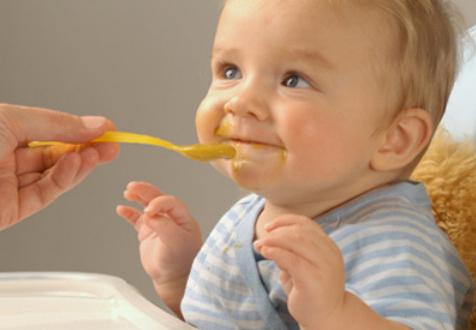 You can not give the baby two new complementary foods at once. To begin with, the baby's stomach and body must get used to one, and only then to another. After the introduction of complementary foods, you need to pay attention to the behavior of the child, to his desire to take new food, to the shape and color of his stool, to changes in gas formation, to the presence of allergic reactions.
You can not give the baby two new complementary foods at once. To begin with, the baby's stomach and body must get used to one, and only then to another. After the introduction of complementary foods, you need to pay attention to the behavior of the child, to his desire to take new food, to the shape and color of his stool, to changes in gas formation, to the presence of allergic reactions.
In the case of artificial feeding, additional products can be tried from the beginning of the third month of life. If the breast is still the only source of nutrition for the child, then it is worth expanding the menu closer to the 15th week. It is important that each complementary food dish is subjected to heat treatment and then carefully crushed. Too thick food 3 month old baby will not be able to overpower, therefore, by consistency, it should be semi-liquid.
How to start weaning
Toward the end of the 3rd month of life, the child can be given a taste of the most low-allergenic vegetables. Babies, whose diet is reduced only to milk, any expansion of the menu is to their liking.
At first, the baby can push food out with his tongue, visibly wrinkling his face. However, after the new dish is tasted, the baby's appetite will improve in a moment. What can be given to a child at 3 months first thing? Of course, only vegetables in a small amount. First 2-3 weeks, the portion should be up to 3 teaspoons per day. New dishes should be introduced closer to dinner, before the main feeding.
It is recommended to start with carrots or potatoes. Vegetables should be crushed to a semi-liquid state. Cook them for a couple. 
carrot puree
Before cooking, the vegetable must be washed and cleaned well. The next step will be cutting the carrots into small pieces so that it is completely boiled, and all useful substances are not extracted into the water. For steaming, the cubes should be about 1 cm in size. The vegetable pieces should be cooked until most of the water has boiled away (25-30 minutes).
As soon as the carrots acquire a soft texture, it should be rubbed on a sieve or in a blender. It is recommended to mix puree with warm milk without added salt. It is allowed to add a drop of olive oil to the dish.
Mashed potatoes
This dish can be prepared in two ways. Unlike other vegetables (steamed only), potatoes can be boiled. To do this, it should be cleaned and cut into large pieces, then placed in an enamel pan and simmer over low heat. Do not overcook potatoes, as all the nutrients will be released into the water. Next, the vegetable is mashed to a puree and mixed with milk to a semi-liquid state. 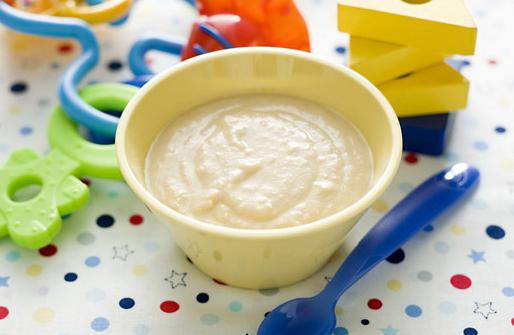 For steaming potatoes, they should be chopped into small pieces so that the core does not end up being hard.
For steaming potatoes, they should be chopped into small pieces so that the core does not end up being hard.
In vegetable puree for children (3 months), you can add a third of a teaspoon of olive oil.
Mixed food
If the child responds well to each vegetable separately, then you can begin to combine them. First, you can give the baby a mixed mashed potatoes and carrots. Then gradually include in the diet and cauliflower, and pumpkin, and broccoli, and zucchini. Many doctors allow even turnips and greens to be given to babies, but these foods are not recommended for complementary foods at such an early age.
It is better to cook vegetables separately, as one of them can already be cooked while the other is just beginning to reach a soft consistency. It is important to give the mixture to the child only in the form of a liquid puree. It is worth noting that the potato contains a lot of starch, so it should not be more than half the serving.  What to feed a child (3 months) if he is allergic to colored vegetables such as carrots and pumpkin? In this case, broccoli is ideal, as it contains more nutrients than any other product allowed for infant nutrition.
What to feed a child (3 months) if he is allergic to colored vegetables such as carrots and pumpkin? In this case, broccoli is ideal, as it contains more nutrients than any other product allowed for infant nutrition.
canned puree
Many people in winter period there is no way to prepare complementary foods from fresh products, but you should not despair. You can also expand the menu for a child (3 months) with the help of canned vegetables. They are sold ready-made and rolled up in portioned jars.
When choosing such complementary foods, you should pay attention not only to the expiration date, but also to the composition of the puree. It should include only the vegetables themselves and vegetable oil (salt is allowed). If the roll contains starch or some additives, it is not recommended for feeding up to six months, until digestive system the child is not fully developed. 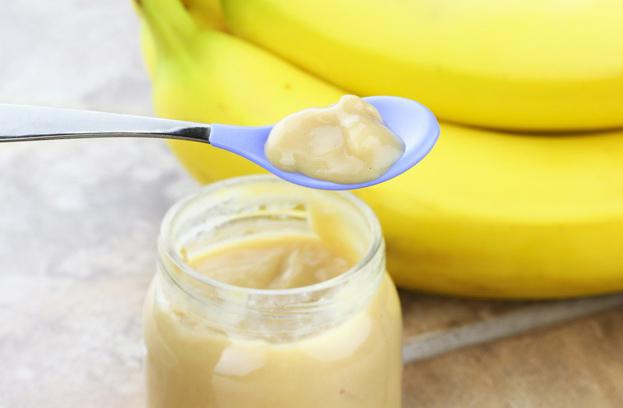 Today in stores you can see jars of fruit puree, on the label of which is the inscription "3+", that is, "allowed for children from 3 months." This often misleads parents, supposedly a baby at this age should already eat a pear, and apples, and peaches. It is important to understand that fruits can be very destructive for the baby's stomach. Before buying such purees, you should always consult a pediatrician and an allergist.
Today in stores you can see jars of fruit puree, on the label of which is the inscription "3+", that is, "allowed for children from 3 months." This often misleads parents, supposedly a baby at this age should already eat a pear, and apples, and peaches. It is important to understand that fruits can be very destructive for the baby's stomach. Before buying such purees, you should always consult a pediatrician and an allergist.
vegetable soup
Closer to the 4th month, you can switch to the new kind combo menu. Vegetable soup is very easy to make. To do this, wash and cut potatoes, cauliflower or broccoli, carrots. On the recommendation of a doctor, beets, parsley and a little salt can be included in the composition.
The soup should cook for about an hour and a half. Ready vegetables are thoroughly mashed to a thick puree. After that, a little broth is added to make the mixture runny. But what can be given to a child at 3 months old if he has an intolerance to potatoes? In this case, the vegetable in the soup can be replaced with semolina. However, it should be prepared separately from the rest of the ingredients. 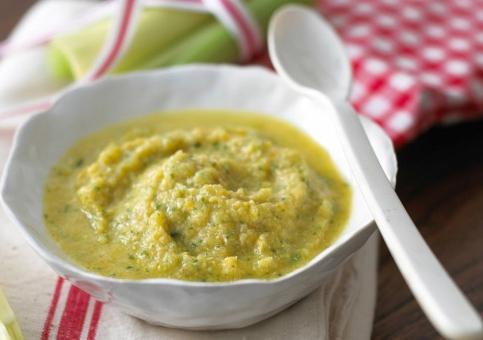 Be sure to add 1/2 teaspoon of olive oil to the soup. A small pinch of salt is allowed.
Be sure to add 1/2 teaspoon of olive oil to the soup. A small pinch of salt is allowed.
Eating problems at 3 months
Many children have a decrease in appetite by this age. This is most often associated with the introduction of a new nutritious dish into the diet. In this case, you should not force the child to eat by force. Better to leave him alone and feed him early next time. Another thing is if the baby is significantly malnourished throughout the day. Perhaps he has problems with the digestive system, so it is worth changing the diet.
Also, many mothers ask themselves when their child is 3 months old: "What to feed if the baby has diathesis on his face from all new products?" In this case, a special diet and proper treatment is required, which is prescribed by the attending physician.
If at least he starts to suck it with appetite, it means that his ears are very likely to hurt (otitis media).
Normally, a three-month-old baby who is breastfed does not need complementary foods, since he receives the entire range of useful substances with mother's milk. In this case, the child gains weight well, does not scare parents with sudden bouts of allergies, and does not show any interest in extraneous food sources. A similar situation is observed for artificial feeding when the baby is eating special infant formula.
However, in reality, the situation is rarely so ideal, and many mothers have to think about additional nutrition already at such a young age. After all, the child may simply refuse to take the breast or spit out the mixture. Or milk may not be enough, it may not be fat or nutritious enough.
What can you feed a child at three months?
Usually, the introduction of any liquids other than mother's milk or infant formula begins with a special baby tea or compote. They should be given strictly before feeding and no more than twice a day. It is better to start with small volumes: literally from 10-15 grams, gradually increasing a single portion of complementary foods to 25 grams.
After the successful introduction of tea into the diet, pediatricians suggest that parents introduce the child to chicken yolk. He is fed quite a bit, so that the child can only taste a new dish, and always before the main feeding with milk or formula. Every day the dose is increased, and after two weeks the child can already be given half the yolk at a time.
If there are clear signs that the baby is not full, vegetable (fruit) juices and purees can be included in his diet. However, it is very important to do without fanaticism here. The digestive tract of a three-month-old baby is not yet fully formed, so there is a great risk of disrupting its natural work.
Pear and clarified apple juices, carrot and banana puree, as well as liquid vegetable soups (zucchini, pumpkin) are best suited for such young children. You can also give decoctions of cereals, for example, from rice. However, it should be remembered that they are quite nutritious and, moreover, “heavy” for the stomach, so you should not get carried away with them.
How to introduce complementary foods into the diet of a three-month-old baby?
In the diet of a three-month-old child, any New Product should be administered in microdoses, gradually, over one to two weeks, increasing the amount of food to the recommended. There must be a time limit between different types dishes, including every new one. In the event of an allergic reaction, this will immediately determine the product that provoked it. Also, such a scheme minimizes the risk of problems with the digestive tract, reduces bloating. After feeding, the behavior of the child (whether he is lethargic, how the stool changes) is necessarily analyzed.
Even liquid and semi-liquid dishes should be given with a spoon. In addition to convenience, this has educational moments: gradually the child is preparing to eat thicker food. Another well-known rule: for children who are bottle-fed, all types of complementary foods begin to be given about one to two weeks earlier than for breastfed babies. In this case, the sequence and scheme of preparation remains the same.
Why complementary foods are given before the main meal?
Any complementary foods should be given before the main meal (adapted formula or breast milk) so that the baby is as motivated as possible to absorb new foods. If the baby satisfies hunger in the usual way, it will be very difficult to persuade him to experiment. And the process of getting used to it will be much more problematic.
For moms whose little one, despite all the tricks, still doesn’t want to “get acquainted” with new food, the following advice will certainly be useful: try mixing complementary foods with breast milk, milk formula or boiled water. At first, the proportions should be kept up for the usual food, but gradually the dosages need to be changed, increasingly reducing the volume of milk / mixture.
Children three months, who are bottle-fed, according to pediatricians, constitute a sort of conditional risk group. It is at this age that the notorious colic appears or intensifies to the maximum. Children become capricious, restless and make the life of the whole family "fun". Grandmothers, fathers, mothers, older children - all are involved. But there is one trick that helps smooth out the troubles of a three-month-old artificial baby - pay close attention to his nutrition.
How to feed a child of the third month of life on artificial feeding?
There is only one answer: with an adapted mixture, selected earlier. Some pediatricians, in the old-fashioned way, advise mothers to start giving fruit or vegetable purees. Yes, and on the shelves of stores there are jars of ready-made purees with an indication of this age. No, it's still early. Your child can still fully digest only adapted mixtures and drink some water. Everything.
How many times and in what quantity to give the mixture to the baby?
In the third month of life, the frequency of feeding is reduced to 6-7.
We give the mixture in a daily volume calculated by the formula: v / 6, where v is the weight of the child in grams.
For example, a child at 2.5 months weighs 5.4 kg, then he needs 5400/6 - 900 ml of milk per day. At one time - 900/7 = 130 ml.
However, at three months, the baby is already developing a regimen. And he wants to eat more at one time of the day, less at another. Now pediatricians and WHO recommend the so-called "free" artificial feeding, when the mother deliberately pours the mixture a little more than necessary, but does not insist that the child empty the bottle completely. It may turn out that in one feeding the baby will suck out only 90 grams, and in another - all 200. It's okay, the main thing is that the daily volume fits into the recommended one.
At the end of the article, we have prepared for you a checklist "Why does the baby cry after feeding?". Download it and be a calm and confident mom!
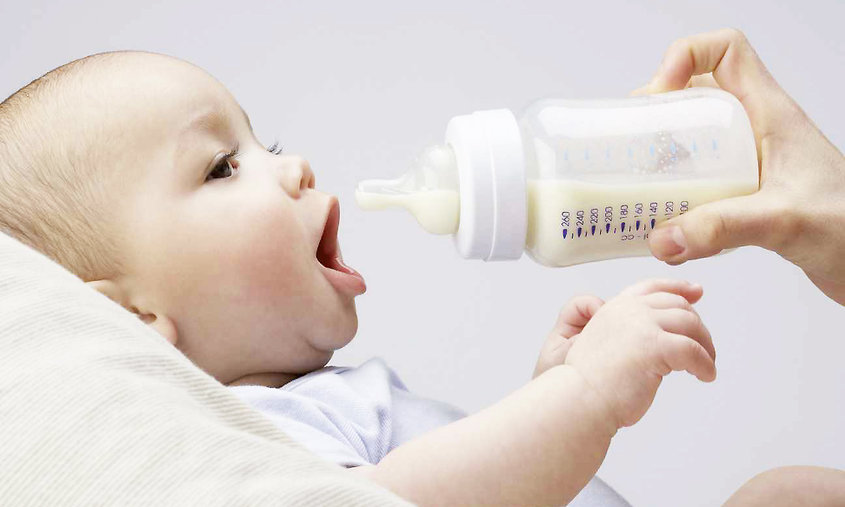
The recommended daily volume is not a dogma, but only a guideline. Deviations can be either upward or downward. It all depends on the temperament and energy exchange of the baby. It is best to focus on the well-being, behavior, chair and weight gain of the child.
Why does an artificial child of the third month of life often have colic?
Children become more active and strong. They begin to greedily suck on the nipple, simply "attacking" on it and swallowing air. As a result, colic intensifies. Moms need to take this moment into account and take action:
- feed the baby only in your arms;
- be sure to fill the nipple with the mixture completely and only then give it to the child;
- monitor the correct position of the baby when sucking;
- clean up the empty bottle in a timely manner.
After feeding, vilify the crumbs with a “column” for 10-15 minutes, if you fell asleep, put them on a barrel in bed.
If the above measures do not help, then you can purchase special feeding bottles with an anti-colic system. Such bottles are produced by several companies:
- Avent;
- MamUltivent;
- Doctor Brown.
There are anti-colic bottles from other companies.
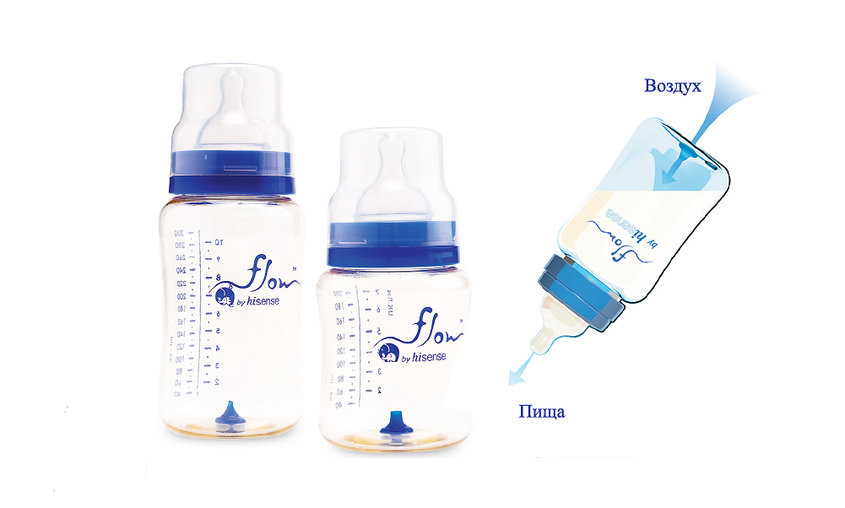
Such devices cost 2-3 times more than conventional devices and require increased efforts for laundering and care during sterilization. The effect is usually there, but sometimes not as pronounced as we would like.
Typical mistakes of mothers of children of three months who are bottle-fed
- Do not take the baby in your arms, feed in the crib. Some are afraid to accustom to hands, others - to wake up when shifting from hands to bed after feeding. However, the connection between the mother and the child is disrupted in this way, the risk of colic and regurgitation increases.
- Change mixture. Colic is an unpleasant phenomenon, but it is unlikely to go away after changing the mixture. Here you need to solve the problem in a complex way (as described above) and the replacement of power is at the very last place in the list of possible solutions.
- Start early feeding. The adapted mixture provides the baby with all the components he needs for growth and development. Therefore, there is no need to rush with complementary foods.
And how was your third month on artificial feeding? Have you used anti-colic bottles?
Download the checklist "Why does the baby cry after feeding?"
Every mother worries and worries when her child cries. And there is no such mother who would not cry with her baby at least once. Download the checklist and find out exactly why your baby is crying after feeding.
If a child is bottle-fed, complementary foods at 3 months are sometimes more necessary for him than for a baby. No matter how good and expensive an adapted milk formula is, it cannot fully replace mother's milk for the baby.
The first complementary foods with artificial feeding at 3 months are not introduced immediately and in small portions. The baby needs to get used to the new food, which is very different from the mixture that replaces breast milk for him.
What is considered baby food
Any product that is not breast milk or adapted formula will be considered complementary foods. This is coarser food unfamiliar to the child. It takes some getting used to, so you need to start giving it in very small amounts.
- fruit or vegetable puree;
- porridge;
- kefir;
- cottage cheese;
- meat puree.
Any food, sooner or later, is introduced into complementary foods for the baby. However, formula-fed babies are most often given complementary foods earlier than infants.

The introduction of complementary foods
When an artificial baby turns three months old, some doctors believe that he can begin to give his first meal. At an early age, juice, fruit or vegetable puree and kefir are best absorbed by the baby. Which product to choose first of all depends on how the baby is gaining weight.
Conditions for introduction
- The child should feel good and be absolutely healthy.
- No new food should be introduced on the day of vaccination.
- It is better to give unusual food in the first half of the day.
- The good mood of the baby is the key to the success of the first complementary foods.
- You should start with a few drops - the baby should try out a new product.
- Complementary foods are not a substitute for breast milk or adapted formula. Completely replace one feeding with porridge or mashed potatoes should be much later.
- If the baby is breastfed - new food is introduced after 6 months after the birth of the baby, if the baby is fed with an artificial mixture, supplementary feeding is sometimes appropriate as early as 3 months.
- Rough food should be brought to a comfortable consistency for the baby, since he does not yet have chewing skills at the age of 3 months.
- Fresh food for complementary foods is the law. In no case should you feed your baby with porridge that has stood in the refrigerator, vegetables that have rotted or lain for a long time.
- The temperature of the new food is important. It should not be hot or cold. It is best if the child enjoys the taste of an unfamiliar product.
- In order to better assimilate the new food, do not forget to give the crumbs drinking water throughout the day.
- Before introducing unfamiliar food, you should consult a pediatrician and get the necessary advice.
If every month a bottle-fed baby gains 800-900 g, you can try to introduce juice or puree into the diet. If the pediatrician notes a lack of weight, it is better to additionally introduce kefir or porridge.

In what form is it given
Complementary foods at 3 months old are given to a formula-fed child to improve digestion, introduce additional microelements that the adapted mixture does not contain, and for a variety of nutrition.
- It is important to remember that the product must be prepared for better absorption by the infant. If in the first place you decide to give the baby juice, then it is better to cook it at home from natural fruits (apples, pears). Freshly squeezed juice contains many more vitamins and minerals than store-bought baby food. A few drops of the drink will give the child the opportunity to experience the taste of new food.
- Fruit puree is best prepared using a blender. Apples and pears should be baked in the oven and try to give the baby on the tip of a teaspoon. You can scrape the flesh of a fresh apple.
- Vegetable puree is first prepared from one product - for example, from zucchini. Later, when the baby gets used to the new food, it will be possible to mix one vegetable with another - add broccoli or potatoes. And finally, after a couple of months, the dish should be prepared from several products: pumpkins, carrots, spinach. You should not worry if the child did not take the first portion vegetable puree. The baby is used to the mixture, it is sweeter, so the new unusual taste may cause rejection in him. In order to allow the infant to adapt to a new type of food, it is best to mix the first dose with a drop of formula milk.
- Porridge is introduced into complementary foods in the event that a child who is bottle-fed does not gain the necessary weight. You can use ready-made food intended for baby food. But it is better to cook porridge yourself. This will require a teaspoon of crushed rice cereal. Any other basis is not desirable for the first time - many cereals contain gluten. Cereal flour should be diluted cold water and let stand. A mixture of cereals and water is poured into boiled milk and boiled until thick. To give the crumbs porridge for the first time, it should be diluted with breast milk or a mixture. A quarter of a teaspoon is enough to start.
Feeding table for artificial
We offer you a scheme for the introduction of complementary foods for a baby on artificial feeding from 3 months to 1 year.
| Products and dishes (jr., y.) | Age (months) | |||||||||
|---|---|---|---|---|---|---|---|---|---|---|
| 0-1 | 2 | 3 | 4 | 5 | 6 | 7 | 8 | 9 | 10-12 | |
| Breast milk or infant formula | 700-800 | 800-900 | 800-900 | 800-900 | 700 | 400 | 300-400 | 350 | 200 | 200 |
| Fruit juice | 5-30 | 40-50 | 50-60 | 60 | 70 | 80 | 90-100 | |||
| fruit puree | 5-30 | 40-50 | 50-60 | 60 | 70 | 80 | 90-100 | |||
| Cottage cheese | 10-30 | 40 | 40 | 40 | 50 | |||||
| Yolk (pcs.) | ¼ | ½ | ½ | ½ | ||||||
| vegetable puree | 10-100 | 150 | 150 | 170 | 180 | 200 | ||||
| Porridge | 50-100 | 150 | 170 | 180 | 200 | |||||
| Meat puree | 5-30 | 50 | 60-70 | |||||||
| Whole milk, kefir and other fermented milk products | 200 | 200 | 400-600 | |||||||
| Premium wheat bread | 5 | 5 | 10 | |||||||
| Rusks, cookies | 3-5 | 5 | 5 | 10-15 | ||||||
| Vegetable oil | 1-3 | 3 | 3 | 5 | 5 | 6 | ||||
| Butter | 1-4 | 4 | 4 | 5 | 5 | |||||
Rules of conduct after the new menu
- The baby needs to be watched. It is important to follow how he feels after eating a new adult food.
- Most often, a skin reaction does not occur immediately after the first sample of vegetable or fruit juice and puree, but somewhat later. Therefore, check for a couple of days if the baby has a reaction to a new food.
- The second complementary food should be given to the baby only if his state of health and mood have not changed.
- Stool is another indicator of a baby's receptivity to new foods.
- If a child has a negative reaction to a new menu (rash, colic), then it makes sense to postpone the introduction of a new product to a later date.
How is feeding during the day along with complementary foods
Rough food - mashed potatoes or porridge - is given to the child before the second feeding. Neither the former nor the latter is suitable for the introduction of complementary foods. The kid should be cheerful and cheerful in order to easily accept unusual food.
Juice is given after the first feeding. After the baby has been held upright, apple juice can be tasted on the tip of a teaspoon.
Over time, when a child who is bottle-fed becomes completely accustomed to complementary foods, it will be possible to completely replace one meal with them. Which product to choose to replace the mixture will tell the weight of the crumbs. If every month the increase corresponds to the norm, you can enter vegetable puree, porridge or kefir. If the baby is gaining weight poorly, it is better to stop at rice or buckwheat porridge. The calculation scheme is simple: up to six months, the child must gain 1/6-1/7 of the total weight per month.
Complementary foods can be purchased at the store. These are adapted cereals and mixtures for an infant. But still, you should consult a pediatrician and get a competent recommendation about the manufacturers and composition of cereals and purees.

What is "monocomponent"
It is very important to introduce a single product into the diet. If it is mashed potatoes, then only one vegetable is taken for its preparation. If it is juice, then it should be obtained from one fruit. Porridge is cooked on the basis of cereals of one variety. You can start mixing when the child's digestive system is already fully formed, and the absorption of food is easy, since the baby is more mobile and active. This period begins when the baby turns 1 year old.
In order for the baby to accept new food with pleasure, you should prepare for this period. From the age of 3 months, a bottle-fed baby is ready to receive additional nutrition. The fact is that children who are fed from birth with an adapted mixture are more prepared to accept roughage. In addition, they need complementary foods, since breast milk substitutes do not give the crumbs all that any newborn receives with breast milk.
The introduction of juice and puree into the baby’s diet will allow him to develop faster and receive vitamins, minerals and other trace elements from ordinary “adult” food. It's easy to prepare. The main thing is to remember all the rules that are outlined above in this article.
If young parents have any doubts about the introduction of the first complementary foods for an artificial baby at 3 months, you should seek the advice of a specialist. The pediatrician will tell you in detail why an artificial baby needs complementary foods, explain how to properly prepare additional food, and when it is necessary to give it to the baby for the first time.

Regarding weight gain, it is also better to consult with pediatrician. A table on the change in the weight of the baby by months and the scheme for introducing complementary foods is also usually found with the pediatrician. The most important thing is that the child does not have resistance to new food. If everything is done correctly and on time, there should be no obstacles in introducing the baby to adult food.
